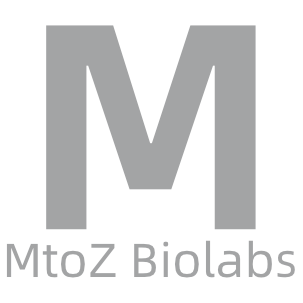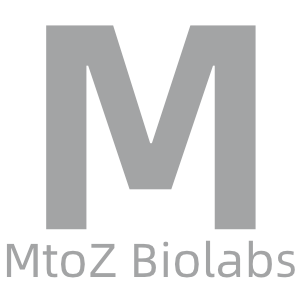Metabolomics Analysis
-
Thyroxine, also known as T4, is a primary hormone produced by the thyroid gland. Structurally, it contains four iodine atoms and is synthesized via the iodination of the amino acid tyrosine. Thyroxine is metabolized in the liver by deiodination and converted to the biologically active thyroid hormone, triiodothyronine (T3). Thyroxine plays a crucial role in a variety of physiological processes including growth, development, metabolism, and regulation of body temperature.
-
• Phenylethylamine Analysis Service
Phenylethylamine (PEA) is a trace amine and influencer of many neurotransmitters such as dopamine and serotonin. Naturally present in certain types of food like chocolate and cheese, it is also commercially used in industries as a dietary supplement for its stimulant effects. Structurally, PEA consists of a benzene ring and an ethylamine side chain. It plays a significant role in a variety of metabolic processes, including dopamine production, mood regulation, and attention regulation.
-
• Homogentisic Acid Analysis Service
Homogentisic acid is a tyrosine metabolite that is naturally occurring in the human body. It is involved in the catabolism of tyrosine and phenylalanine, and its accumulation can lead to a rare genetic disorder called Alkaptonuria. The chemical structure of Homogentisic Acid comprises a six-carbon ring attached to a carboxyl groups, which makes it acidic. Homogentisic Acid is also a precursor of melanin, the pigment responsible for the color of skin, eyes, and hair.
-
• 5-Methoxyindole-3-Acetic Acid Analysis Service
5-Methoxyindole-3-Acetic Acid (5-MIAA) is an indole derivative, naturally occurring in the human body. Its structure consists of an indole backbone with an acetic acid and a methoxy group. As a metabolite of the neurotransmitter serotonin, it is involved in a multitude of biological processes. It's mainly excreted via urine, and its concentration might be altered in patients with psychiatric disorders, such as depression or schizophrenia.
-
• 3-Hydroxyanthranilic Acid Analysis Service
3-Hydroxyanthranilic acid (3-HAA) is an oxidation product of L-tryptophan metabolism along the kynurenine pathway. It is an important intermediate in the biosynthesis of the nicotinamide adenine dinucleotide (NAD). 3-HAA is highly associated with multiple biological and pathological processes. Besides the critical role in energy metabolism through the NAD synthesis, it is also recognized as a natural antioxidant and has a neuroprotective function.
-
• Nicotinyl Methylamide Analysis Service
Nicotinyl methylamide is a derivative of nicotinic acid, whose structure closely resembles that of the natural vitamin niacin (vitamin B3). The chemical structure of nicotinyl methylamide includes a methylamide group substituted on the nicotinic acid backbone, a modification that enhances its biological properties and stability, potentially altering its pharmacokinetic profile, such as absorption and distribution within the body.
-
• 17α-Ethinylestradiol Analysis Service
17α-Ethinylestradiol (EE2) is a synthetic estrogen whose structure resembles that of the natural estrogen estradiol. The chemical structure of EE2 includes an ethynyl group substituted at the 17α position, a modification that imparts significant biological activity and stability, thereby markedly reducing its metabolic rate in the body and prolonging its duration of action. Metabolomics analysis, utilizing high-throughput techniques such as mass spectrometry and nuclear magnetic resonance, can comprehensive
-
• 3-Aminosalicylic Acid Analysis Service
3-Aminosalicylic acid (3-ASA) is an organic compound belonging to the salicylic acid family, characterized by the presence of an amino group (-NH₂) at the third position of the benzene ring and a carboxylic acid group (-COOH) at the first position. This unique structure allows 3-aminosalicylic acid to interact with various molecular targets, contributing to its anti-inflammatory and antimicrobial properties, which are particularly relevant in the treatment of certain bacterial infections, such as tuberculos
-
• Acetaminophen Analysis Service
Acetaminophen, also known as paracetamol, is a widely used analgesic and antipyretic medication. It is characterized by a relatively simple chemical structure, consisting of a hydroxyl group attached to an aromatic benzene ring and an amide group, which contributes to its pharmacological activity. Unlike nonsteroidal anti-inflammatory drugs (NSAIDs), acetaminophen lacks significant anti-inflammatory properties, and its mechanism of action is primarily through inhibition of the cyclooxygenase (COX) enzymes i
-
• 5β-Androsterone Analysis Service
5β-Androsterone is a metabolite of androgens, specifically a breakdown product of testosterone and dihydrotestosterone (DHT). It is a steroid hormone that belongs to the family of 17-ketosteroids and is characterized by a 5β configuration, where the hydrogen atom at the 5th position is in a β-orientation. This structural feature distinguishes it from its 5α isomer, 5α-androsterone, and affects its biological activity and metabolism. 5β-Androsterone itself is a less active form of androgen and is often consi
How to order?







